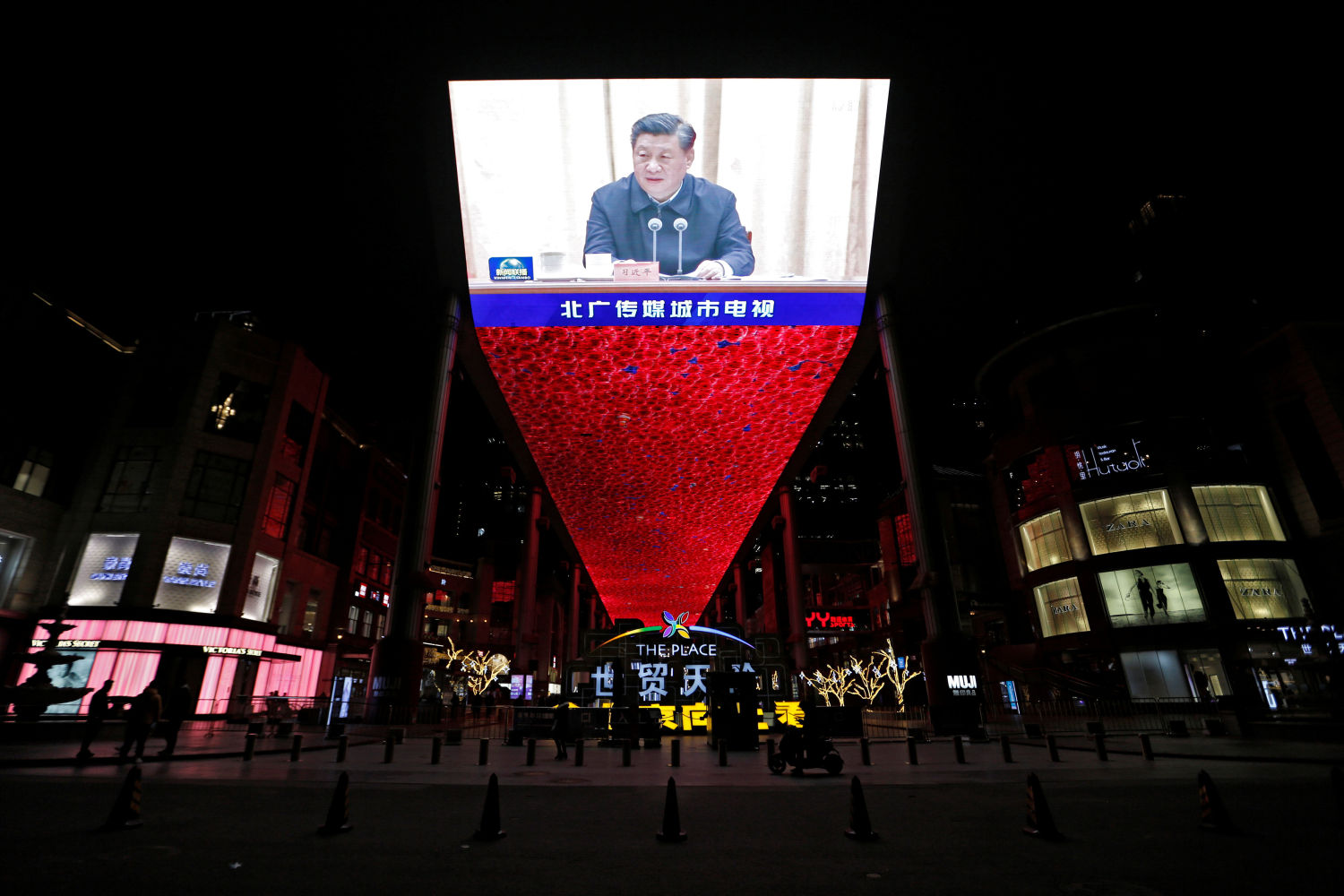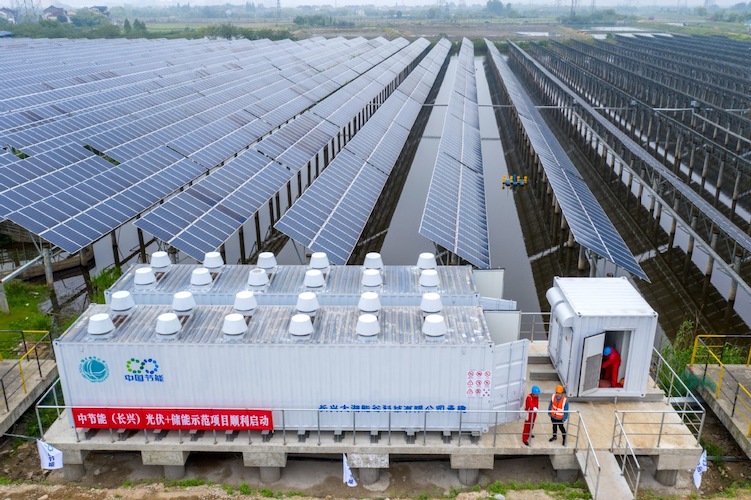(ATF) While the international focus on China’s annual legislative meeting, the National People’s Congress (NPC), will be on the country’s plans for hot-button issues such as Hong Kong and Xinjiang, business will be watching for clues to economic policy underlined in the forthcoming Five-Year Plan (FYP).
The annual NPC session – which will be held separately from but simultaneously with the annual meeting of the advisory Chinese People’s Political Consultative Conference – will chart a course for post-coronavirus pandemic economic recovery and unveil a plan to shift away from exports and on to consumption.
Clean energy and stable technological supply chains are also high priority items.
Despite the NPC’s reputation as a rubber-stamp legislature for China’s government, there is major policy aired in public. “There will be three big documents: the government work report, the budget and the 14th five-year plan,” Wei Yao, chief China economist at Société Générale.
“They cover two main topics: first, to what extent economic policy will be normalised after a year of an extraordinary crisis; and second, how to speed up the desirable structural changes,” she added.
The NPC session and the FYP will be particularly focused on longer-term issues such as the Dual Circulation Strategy, a policy announced last year to cut its dependence on overseas markets and technology. Under the strategy, “internal circulation” is the domestic cycle of production, distribution, and consumption while “external circulation” is the more traditional export-import model.
“The market is more concerned about fiscal policy, which we expect to remain expansionary, with a deficit target set at around 4%,” said Kelvin Lai, chief economist, Asia ex-Japan, at Daiwa Capital Markets in Hong Kong. “But like last year, we expect no major stimulus programme announcements.”
WORK REPORT
Premier Li Keqiang will kick off proceedings when he delivers the so-called “work report”, which for a second consecutive year is not expected to include an explicit economic growth target.
“We expect policymakers to set the 2021 growth target at above 6%,” said Helen Qiao, China and Asia economist at Merrill Lynch (Hong Kong), a unit of Bank of America.
Overall, analysts expect policy to stay modestly accommodative, while monetary and fiscal support will taper as the economy continues to recover. “Policymakers will pay more attention to controlling macro leverage to achieve long-term balance of maintaining growth and managing financial risks,” Qiao added.
The work report is the conclusion of year-long efforts by China’s central planners, culminating in the Central Economic Work Conference (CEWC) held in December 2020. Tao Wang, head of Asia economics and Chief China economist at UBS Global Research, expects Li’s speech to hew closely to CEWC policies.
“With growth set to recover strongly this year, we expect the NPC to shift focus towards risk and leverage control, announcing a smaller fiscal deficit and more prudent monetary policy stance,” Wang said.
Among major markers, the headline fiscal budget deficit is estimated at 3.2% of gross domestic product, while the consumer price index inflation target is expected to be 3%.
There is expected to be 3.2-3.5 trillion yuan in local government bond issuance in 2021 – and no issuances have been made so far this year. “We expect confirmation that pandemic-response measures are being withdrawn, including social security waivers and issuance of ‘anti-pandemic’ sovereign bonds, which together totalled 2.5% of GDP last year,” chief Asia economist at Capital Economics, Mark Williams, said.
TECHNOLOGICAL INDEPENDENCE
The 14th FYP, a blueprint for 2021-2025, is expected to emphasise homegrown technology. While China has reined in consumer-focused internet companies such as Jack Ma’s Alibaba – the only high-profile tech figure seen in Beijing’s halls of power this week was Pony Ma, chairman and chief executive officer of Tencent – the government is keen to promote strategic technology.
“These plans have been put in place to sustain China’s growth (through technological innovation and the upgrading of its industries), reduce its dependence on tech and energy imports, and strengthen its leadership position,” Ting Lu, chief China economist at Nomura, said.
As tensions between Beijing and Washington have risen, US bans on supplies of semiconductors to top telecoms gear maker Huawei have exposed China’s reliance on imported technology. “The plan is expected to map out the development plan of technological independence and secure supply chains such as semiconductors,” Kee Yan Yeo, an analyst at DBS in Singapore, said.
The main driver of China’s technology self-sufficiency strategy is strained relations with Washington. “China will continue to strive to achieve technology independence, in our view, even as the Biden administration is unlikely to abruptly cut technology component supply the way Trump did,” Qiao at BofA said.
Specifically, Beijing is expected to support domestic research and development, and domestic manufacturers of semiconductors, 5G, artificial intelligence, big data, satellite technology, electric vehicles (EVs), green energy, biotech and similar areas, according to Lai at Daiwa.
SUPPORTING SUSTAINABILITY
With China’s declaration that it would reach peak carbon emissions by 2030 and carbon neutrality by 2060, the FYP is expected to offer much to address clean energy and sustainability needs.
“We will watch for details on how it will change China’s energy mix, by what pace, and if that will trigger any state-owned enterprise consolidation in the energy sector,” Qiao said.
Provinces have highlighted ambitions for “new infrastructure”, including 6,000 5G towers, blockchain-based digital infrastructure and a big data exchange.
“This will no doubt include investment in clean energy and transport, growth of EVs and high-speed railways as well as a ramping up in semiconductor and technology hardware investment,” Sean Darby, global equity strategist at Jefferies, said.
ANY OTHER BUSINESS
Antitrust policy is high on the agenda this year – on February 7, China’s State Administration for Market Regulation promulgated the Antitrust Guidelines for the Platform Economy – and analysts are watching for clues on how strict the enforcement will be.
“A string of investigations into and penalties imposed upon Chinese internet companies, including leading e-commerce giants, in recent months signalled China’s seriousness about regulating its internet industry to promote fair competition and double down on monopolistic practices,” Sofia Baruzzi, a lawyer in Shanghai, said.
Boosting domestic consumption requires sustainable income growth, and more equitable income and wealth distribution. “Policymakers may lay out plans to reform the taxation system, support new services sectors, and create employment,” said Qiao at BofA.
Some analysts have suggested China could finally lift its birth control policies completely during the session.
While China’s economic plan shows many possible permutations, the FYP’s political stance is unlikely to waver. Beijing will continue to tighten its grip on Hong Kong since imposing national security legislation last year. Proposed changes would reinforce Beijing’s ambition to run the territory more directly and further marginalise pro-democracy candidates.
With reporting by Reuters























